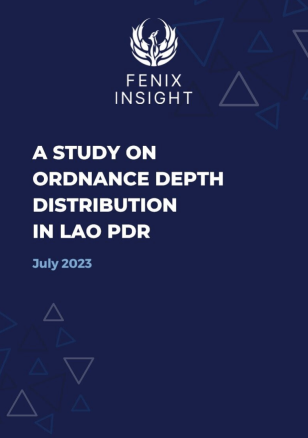A Study On Ordnance Depth Distribution In Lao PDR
A Study On Ordnance Depth Distribution In Lao PDR
October 4, 2023
The process of releasing land from the threat of landmines, submunitions and other explosive ordnance, is one of risk management.
The principle that survey and clearance action should be sufficient to satisfy the needs of any expected follow-on land use is well established. It is common in many parts of the world to conduct clearance to a relatively shallow level, while accepting that large air-dropped bombs may remain deep beneath the ground. While they lie undisturbed, the evidence is that they pose little risk to people. The near-weekly discoveries of bombs beneath German cities illustrate the way in which ‘all reasonable effort’ includes disposal action as a reactive response to the discovery of such bombs but does not demand a comprehensive pro-active national search to find every such bomb that may be lying beneath the ground.
The situation in Laos exhibits many of the same characteristics. Different types of contamination are found at different depths and interact in different ways with the various human activities that will, or may, subsequently take place in suspected or confirmed hazardous areas. As with all risk management, possible responses or mitigation measures are available. The task of national authorities and operating agencies is to identify and implement the right balance of policies and procedures that ensure safety while using available funds to the best effect.
This study considers the role of the ‘default clearance depth’ within the wider range of risk mitigation policies and procedures available to national authorities, mine action agencies and operating organisations.

 Locations
Locations





